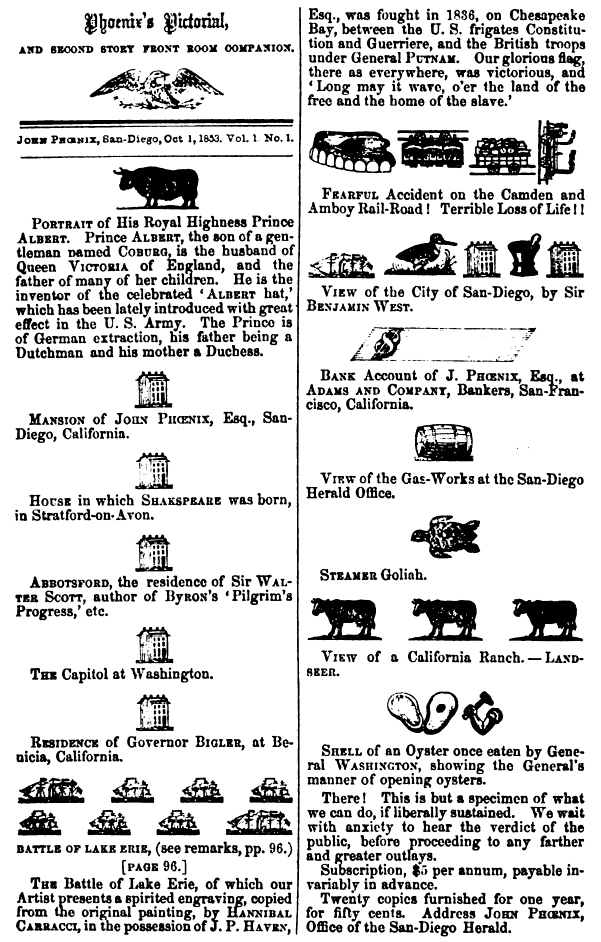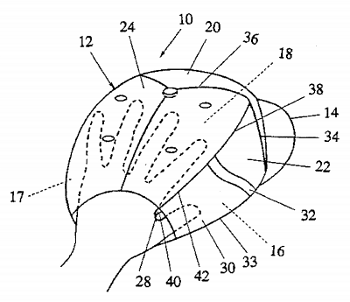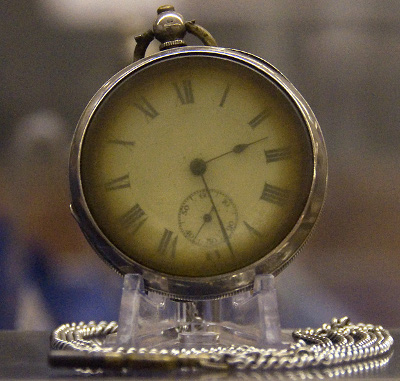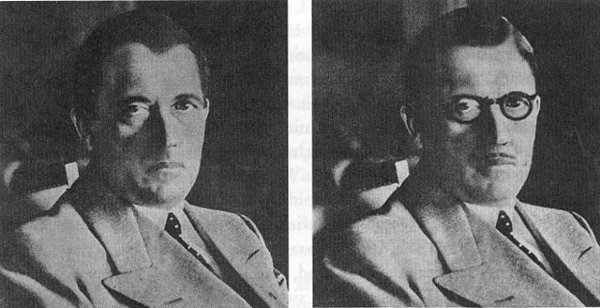burgh-bote
n. a tax for the repair of fortresses
Author: Greg Ross
Fun With Pictures
In 1853, lamenting the recent vogue for “illustrated newspapers,” American satirist John Phoenix (George Derby) offered an “an illustrated publication of unprecedented merit, containing engravings of exceeding costliness and rare beauty of design, got up on an expensive scale which never has been attempted before in this or any other country”:

Mystery Guest
For the Fan

Catching a fly ball can be intimidating, so in 1993 Douglas Munoz invented a baseball cap that can be converted instantly into a glove.
“It is anticipated that the brim may assist the wearer in catching by extending the wearer’s reach.”
Orthography
“It’s a damn poor mind that can only think of one way to spell a word.” — Andrew Jackson
“If the professors of English will complain to me that the students who come to the universities, after all those years of study, still cannot spell ‘friend,’ I say to them that something’s the matter with the way you spell friend.” — Richard Feynman
A gentleman received a letter, in which were these words: Not finding Brown at hom, I delivered your meseg to his yf. The gentleman, finding it bad spelling, and therefore not very intelligible, called his lady to help him read it. Between them they picked out the meaning of all but the yf, which they could not understand. The lady proposed calling her chambermaid, ‘because Betty,’ says she, ‘has the best knack at reading bad spelling of any one I know.’ Betty came, and was surprised that neither sir nor madam could tell what yf was. ‘Why,’ says she, ‘yf spells wife; what else can it spell?’ And, indeed, it is a much better, as well as shorter method of spelling wife, than doubleyou, i, ef, e, which in reality spell doubleyifey.
— Benjamin Franklin, letter to his sister, July 4, 1786
Building Codes

Writing on “The Sagacity of the Bees” in fourth century, Pappus of Alexandria argued that bees had contrived the hexagonal shape of their honeycomb cells “with a certain geometrical forethought.” Irregularly shaped cells “would be displeasing to the bees,” he wrote, and only triangles, squares, or hexagons could fill the space regularly. “The bees in their wisdom chose for their work that which has the most angles, perceiving that it would hold more honey than either of the two others.”
In 1964, in a charming address titled “What the Bees Know and What They Do Not Know,” Hungarian mathematician László Tóth told the American Mathematical Society that he had found a slight improvement on the classic honeycomb design: Instead of closing the bottom of each cell with three rhombi, as bees do, it’s more efficient to use two hexagons and two rhombi.
But, he added immediately, “We must admit that all this has no practical consequence. By building such cells the bees would save per cell less than 0.35% of the area of an opening (and a much smaller percentage of the surface-area of a cell). On the other hand, the walls of the bee-cells have a non-negligible width which is, in addition, far from being uniform and even the openings of the bee-cells are far from being exactly regular. Under such conditions the above ‘saving’ is quite illusory. Besides, the building style of the bees is definitely simpler than that described above. So we would fail in shaking someone’s conviction that the bees have a deep geometrical intuition.”
(László Fejes Tóth, “What the Bees Know and What They Do Not Know,” Bulletin of the American Mathematical Society, 1964, 468-81.)
UPDATE: Wait — maybe they’re not as smart as we thought. (Thanks, Vic.)
So Ordered
On Feb. 18, 1986, frustrated that heavy rains had prevented some jurors from reaching his court, U.S. District Court Judge Samuel King said, “I hereby order that it cease raining by Tuesday. Let’s see how that works.”
California immediately entered five years of severe drought, with strict water rationing.
When colleagues reminded King of his order in 1991, he said, “I hereby rescind my order of February 18, 1986, and order that rain shall fall in California beginning February 27, 1991.” Later that day the state received 4 inches of rain, the heaviest storm in a decade, and two further storms added another 3 inches.
In a letter to a local newspaper, King said this was “proof positive that we are a nation governed by laws.”
Dispatch
Do not suppose that I didn’t write, hundreds of times: the difficulty has been with the directing. I directed the letters so violently at first, that they went far beyond the mark — some of them were picked up at the other end of Russia. Last week I made a very near shot, and actually succeeded in putting ‘Earls Terrace, Kensington,’ only I over-did the number, and put 12,000, instead of 12. If you inquire for the letter at No. 12,000, I dare say they’ll give it you. After that I fell into a feeble state of health, and directed the letters so gently that one of them only reached the other side of the room. It’s lying by the side of the window now.
— Lewis Carroll, letter to Mary MacDonald, Nov. 5, 1864
Time’s Up

This fob watch, retrieved from the wreck of the Titanic, confirms the approximate time that the ship went down, 2:20 a.m. on April 15, 1912.
On June 7, 1692, an earthquake destroyed Port Royal, Jamaica. Centuries later, during a 1960 excavation in Kingston Bay, archaeologist Edwin Link discovered a pocket watch whose hands were frozen at 11:43 a.m., pinpointing the onset of the quake and confirming eyewitness accounts made 268 years earlier.
On Aug. 12, 1949, time slowed briefly in London: Fifty starlings settled on Big Ben’s minute hand and delayed the striking of the hour by four and a half minutes.
Rhyming Trouble
There comes to me a question, your ear toward me bow,
Pray listen to my ditty and do not start a row –
I’ve lots of words peculiar, enough to fill a mow —
And thoughts crowd in upon me, like piglets by a sow.
So lay aside your weapons, let no one draw the bow,
And sit yourselves around me, all neatly in a row,
On clover leaves and timothy, all ready for to mow —
Alas, we must be moving, the farmer wants to sow.
— “Cryptox,” in the National Puzzlers’ League publication Enigma, May 1945

